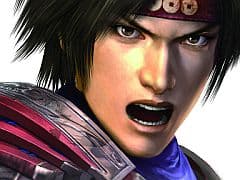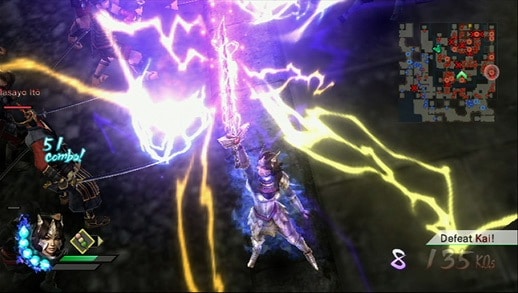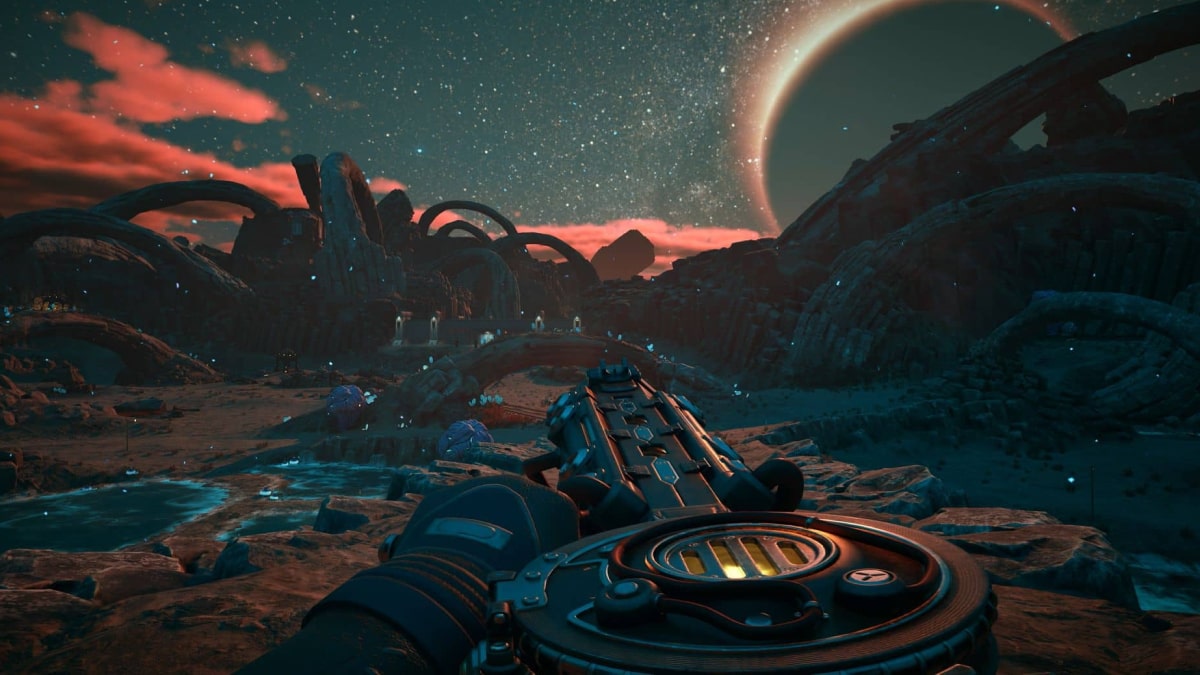You can trust VideoGamer. Our team of gaming experts spend hours testing and reviewing the latest games, to ensure you're reading the most comprehensive guide possible. Rest assured, all imagery and advice is unique and original. Check out how we test and review games here
I apologise in advance if this review has a lethargic tone to it, but Samurai Warriors 3 has bored me into a state of journalistic fatigue. The mind boggling monotony of its story mode had me literally falling asleep at the controller (not literally). I can’t remember a time that I’ve been less engaged with a piece of interactive entertainment, and the thought of writing an upbeat piece of prose about the game is filling me with dread. Still, that’s the job, and I’ll endeavour to do it to the best of my ability.
Samurai Warriors 3 is the sequel to the sequel of the spin off to the Dynasty Warriors series. You’d think Koei would have saturated the market with their traditional Eastern hack ‘n slash games enough, but apparently there’s always room for one more. Samurai Warriors 3 continues the series started on the PlayStation 2 back in 2004. The third iteration of the series (although it feels like the 23rd) arrives on the Wii for the first time with improved graphics, seven new characters and co-operative play.
While Dynasty Warriors is based on Chinese history and culture, Samurai Warriors is set during the turbulent Warring States period of feudal Japan. Not knowing a great deal about the thirty seven warriors on offer, I chose to play through the story mode as Oda Nobunaga, a character I recognised from Capcom’s Onimusha series. Of course, if I’d paid attention in history class (not that they taught us about feudal Japan) I’d have known that Nobunaga was a Japanese warrior that unified Japan in the late 16th Century. The story mode follows Nobunaga through this period of time, with horrible American voice acting to accompany the very Japanese character models.
Before beginning the tiresome slaughter of thousands of Japanese soldiers, there are a myriad of maps, tutorials and objectives to wade through. You’d be forgiven for thinking you were about to get stuck into a Creative Assembly RTS or something, which is funny considering just how little strategy is involved in the subsequent action. Each level follows the same rigid formula; you move from point A to point B around a maze-like map, killing a crap load of enemies along the way. More often than not, you’re looking to kill important enemies who act as the objectives of each level. Once killed, you simply proceed from point B to point C and repeat the whole process all over again. Occasionally you get to ride a horse or fire a canon, but there’s very little variation to the gameplay.
Combat itself is satisfying enough. For five minutes. Each character has a normal weapon attack, a power attack and a Musou attack. Musou attacks are your special moves and deplete a segment from the Musou gauge. For the most part, combat is a simple case of mixing these three attacks and using special attacks at the appropriate times. Encasing this combat system is the standard selection of role playing mechanics you’d expect from such a game. Your character will level up based on a kill-based experience system, while a blacksmith in between missions will happily upgrade your equipment in exchange for a few gems.
The RPG mechanics, while not redundant, add very little to combat. The trouble is that each level adheres to the same structure and minute-to-minute action that everything else quickly becomes obsolete. Foolishly, I thought that a different character might solve this problem, so I started a new game with Hanzō Hattori, the samurai who Tarantino based a character on in Kill Bill. I was hoping for something different; stealth, assassinations – anything that would deviate from the tedium the game had slipped into with Nobunaga. I was sorely disappointed. The game played out exactly the same as before, except with a different weapon and the ability to find ‘ninja paths’ by double-jumping. The differences between the 37 playable characters are alarmingly superficial.
The main menu also plays host to a range of other game modes, but unfortunately they all revolve around the same repetitive combat. Murasame Castle is perhaps the most removed from this, which offers a series of quests and an overarching mystery that needs to be solved. A Dojo mode allows players to create their own Musou warriors, which can then be taken through Historical Mode. Here, the key battles from the Warring States can be played in chronological order; a joy for fans of Japanese history. For anybody particularly enthralled by the combat system, the game does actually hide a serious amount of content.
To reiterate the point I’ve been hammering home throughout this review; the game is frighteningly monotonous. I expect there’s a certain type of player that could get something from the game, but the only thing I was getting was very bored. The game’s not broken, just designed with a complete disregard for people with normal attention spans. It feels very last gen, with an archaic story structure and combat system that hasn’t changed all too much since the very first Dynasty Warriors games. Clearly there are people out there still buying these games, but isn’t it about time this franchise was laid to rest?

/https://oimg.videogamer.com/images/4b18/samurai_warriors_3_11.jpg)






